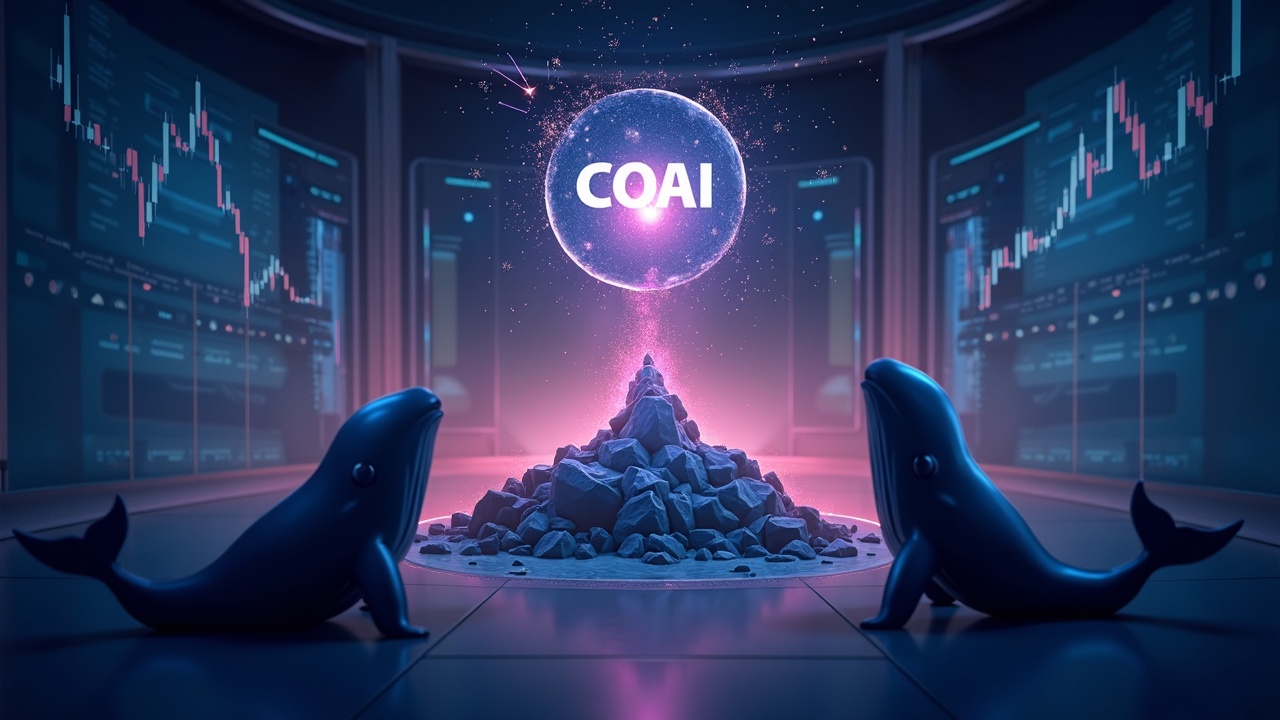A Tale of Extreme Volatility
ChainOpera AI (COAI) has experienced a truly turbulent October 2025. After reaching an all-time high of $43.81 on October 12, the token underwent a dramatic correction, crashing approximately 90% from its peak. As of October 28, COAI is trading around $4.10 to $4.15, reflecting a market capitalization of roughly $780 million to $813 million. This sharp decline highlights the highly speculative and volatile nature of the asset.
Despite the severe price drop, the token’s trading volume remains substantial, often exceeding $130 million in a 24-hour period. This high volume during a downturn suggests a fiercely contested battle between sellers taking profits and buyers looking for a bargain, setting the stage for the conflicting signals now emerging in the market.
Conflicting Signals: Accumulation vs. Centralization
The most notable development following the crash is the behavior of large investors, commonly known as “whales”. On-chain data indicates that these major wallets increased their COAI holdings by 26.19%, while addresses labeled as “smart money” saw a 31.17% rise in their balances. This accumulation during a price drawdown can be interpreted as a sign of belief in a potential rebound.
However, this glimmer of hope is overshadowed by a critical and severe risk factor: extreme centralization. Multiple analyses reveal that the top 10 wallets control a staggering 87.9% to 97% of the entire circulating supply of COAI. This level of concentration gives a tiny group of holders the power to manipulate the price single-handedly. A coordinated sell-off by just one or two of these whales could trigger a catastrophic crash, instantly erasing recent gains and liquidating leveraged positions.
The Technical Setup and Key Price Levels
From a technical analysis perspective, the chart presents a mixed but cautiously intriguing outlook. A key observation is a hidden bullish divergence on the 4-hour Relative Strength Index (RSI), a pattern that previously preceded a massive 479% surge in COAI’s price. This pattern suggests that while the price was making lower lows, the underlying selling momentum was weakening, potentially signaling an exhaustion of the downtrend.
For traders, specific price levels are now in focus. The immediate and crucial support to watch is at $3.97; a break below this level could invalidate the bullish setup and lead to further declines. On the upside, the initial resistance hurdles are found at $5.40 and $7.33. A decisive and sustained breakout above $7.81—which aligns with the classical R3 resistance level—would be a stronger technical confirmation of a bullish reversal. The most significant target for bulls remains $9.09, which would represent a 121% gain from recent lows.

A High-Stakes Environment Demanding Caution
For project teams, small traders, and regulators, the COAI market represents a high-risk environment. The combination of extreme whale dominance and high leverage in futures markets creates a tinderbox situation. There is a persistent and high risk of cascading liquidations if the price experiences a sudden dip.
The long-term viability of COAI hinges on its ability to transition from a speculative asset to a project with genuine utility and a more decentralized holder base. Its roadmap includes a mainnet launch in early 2026 and initiatives to grow its ecosystem of AI agents. While this provides a fundamental narrative, the project’s future remains heavily dependent on navigating the looming “cliff risk” of token unlocks for the core team and investors starting in late 2026.
In summary, while technical signals and whale accumulation suggest the possibility of a short-term rebound for ChainOpera AI, the market is built on a fragile foundation due to extreme supply concentration. For market participants, this is a high-stakes environment where vigilance over key support levels and whale wallet activity is not just prudent—it is essential.


